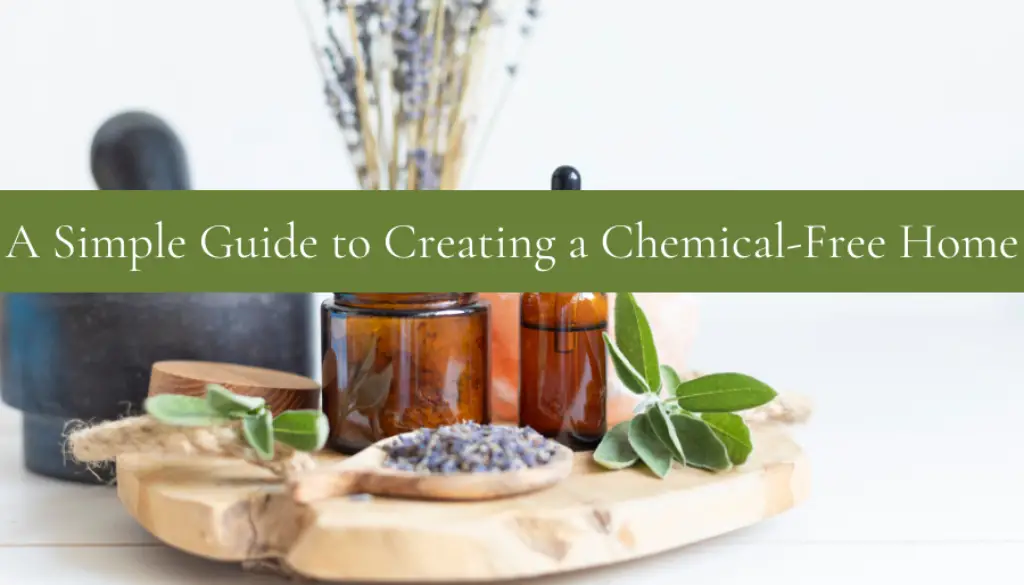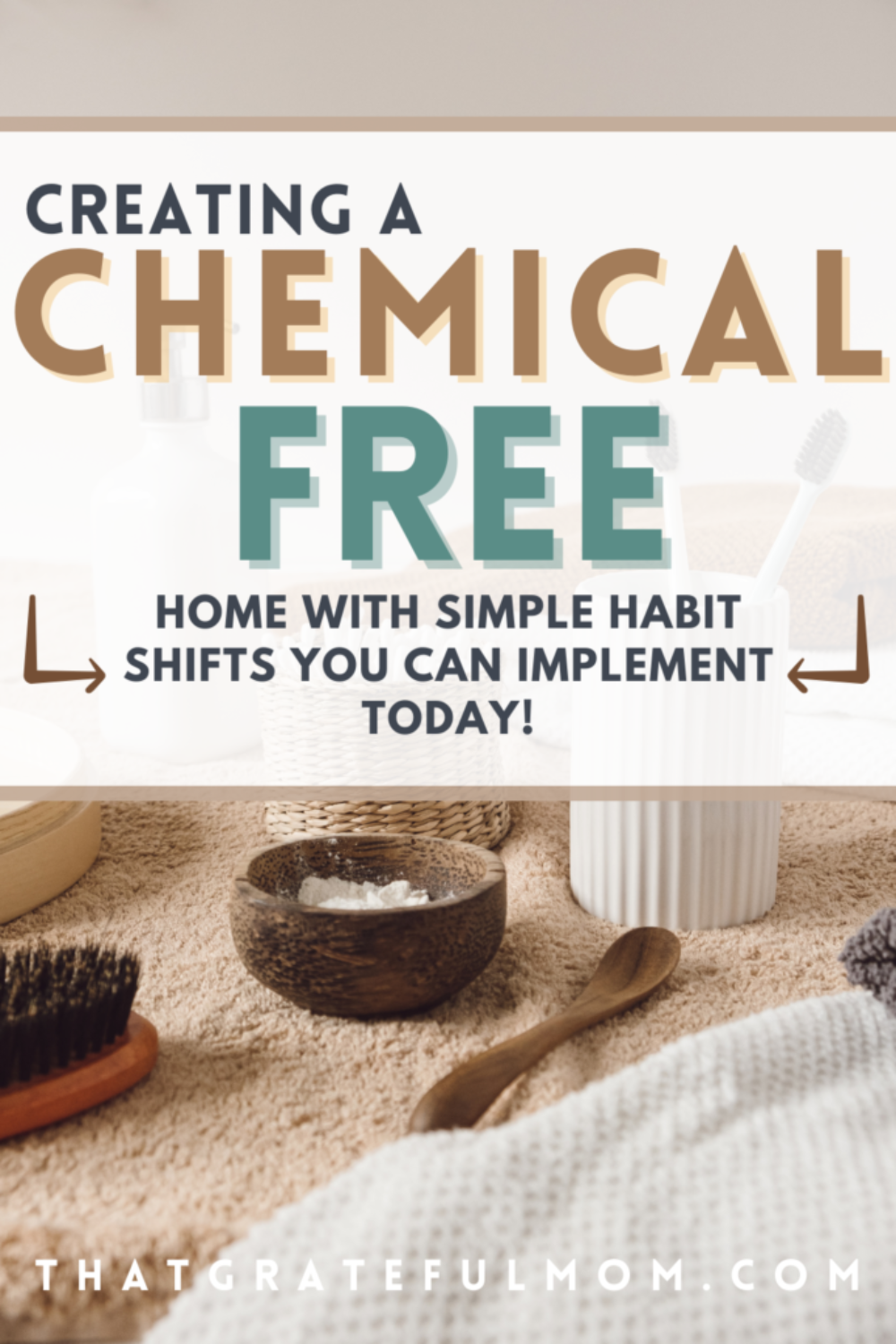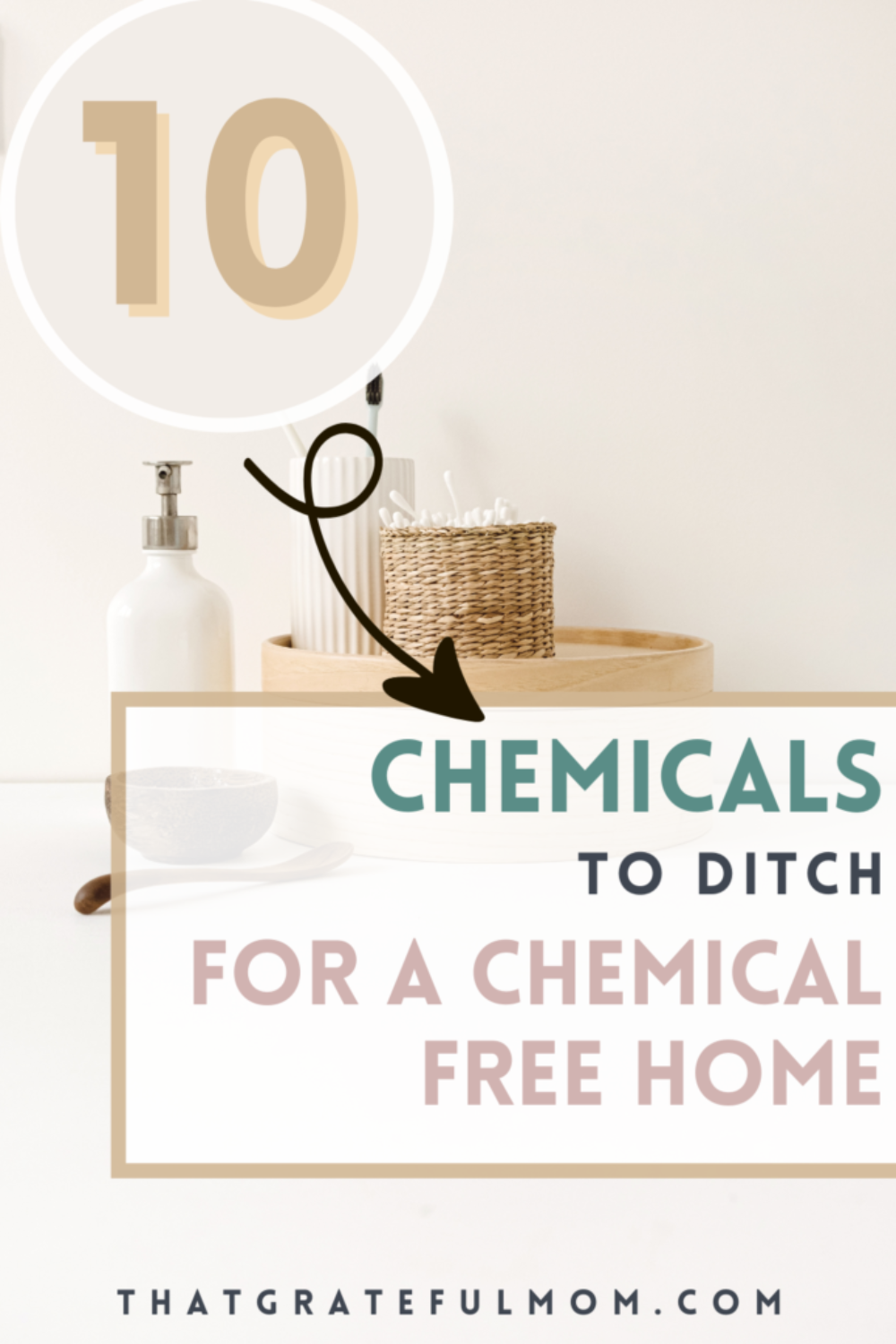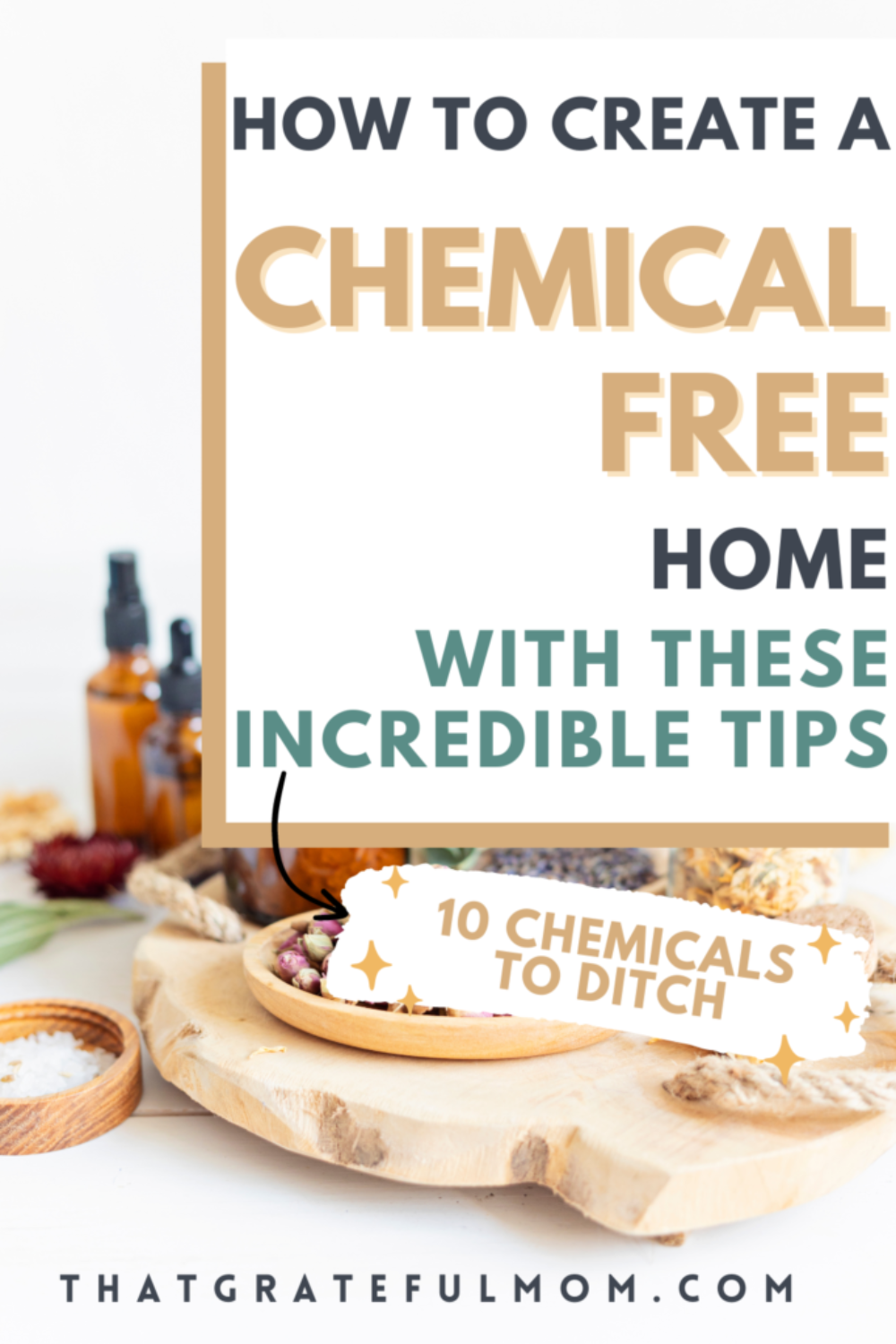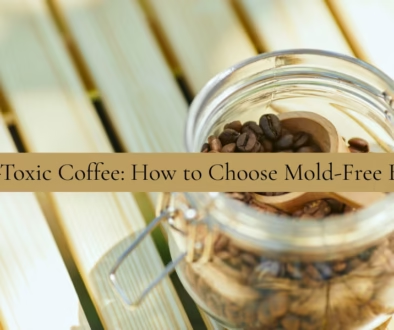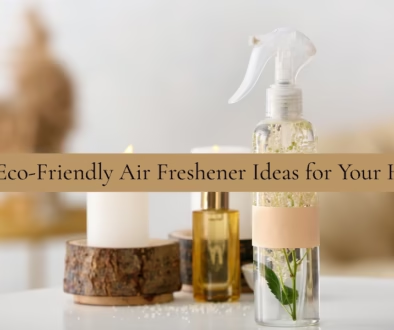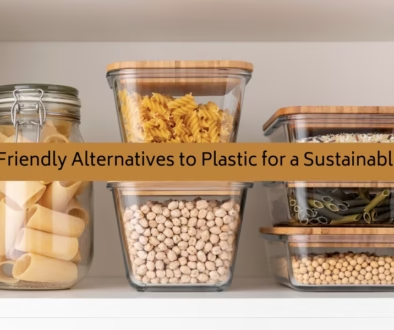A Simple Guide to Creating a Chemical-Free Home
I share a lot about transitioning to a holistic lifestyle and how we’ve made that work as a family of 8. It’s a passion of mine and something that needs to be talked about more frequently. Today, I’m sharing some of the habits and tips we’ve adopted to create a chemical-free home and reduce indoor air pollution.
The chemicals I’m referring to in today’s post are harmful ingredients linked to dozens of health issues like hormone disruption, allergic reactions, respiratory harm, and even cancer. While there are chemicals in pretty much everything, I’m specifically talking about harmful substances known to cause health issues. I’ll share commonly used toxins, safer alternatives, and simple ways to support your health as you work to make changes in your home.
If you’ve ever looked at an ingredient list on a product and realized you couldn’t pronounce half the words, there’s a good chance it’s because some of them are toxic chemicals. The crazy thing is that it isn’t limited to just personal care and cleaning products. Fabrics, foods, paints, and furniture can all contain these harsh chemicals, too.
If you’re just getting started on your low-tox journey, I’ve got your bases covered! You’ll start to familiarize yourself with some of the more common chemicals used and why it’s a good idea to avoid them.
Some topics we’ll cover today include:
- Why you may want to transition to a chemical-free home
- The benefits of creating a chemical-free home
- The top 10 chemicals to avoid in household products
- How to start transitioning to a chemical-free home
- Resources I’ve found helpful on my journey so far
- Affordable ways to make changes on a budget
Before reading any further, I just want to make it clear that I never share these suggestions to scare you or make you feel like you have to make these changes to protect your family. Household products are an essential part of our daily lives, offering convenience and cleanliness. However, it is crucial to be aware of the potential risks associated with certain chemicals found in these products. If, at the end of this, you decide you aren’t interested in changing your lifestyle, that’s good for you! You need to make the best decision for yourself and your family. Forget about the rest!
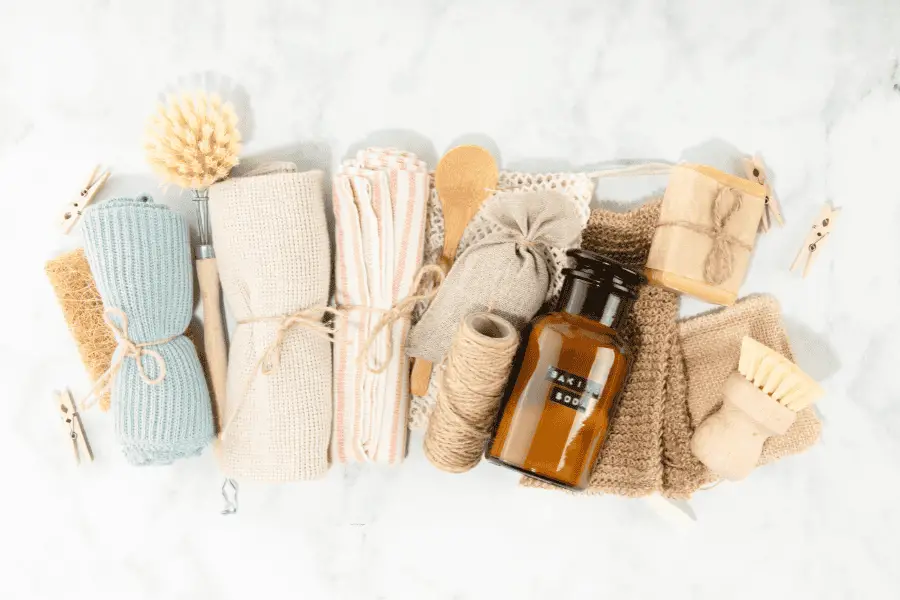
Why you may want to transition to a chemical-free home
When our son was diagnosed with a rare form of leukemia, we knew it was time to start making changes to our habits. While we do not know what caused his diagnosis, only 10% of all cancers are genetic. The rest are linked to environmental factors. (Statistic from NIH.) Doctors aren’t trained to teach you how to reduce your exposure to harsh toxins, leaving much of the research and decision-making up to us as consumers.
It was disheartening to hear from the oncology team that our son’s diagnosis was just ‘bad luck’ in their words when so many diagnoses are linked to environmental choices. How can you sit there and tell me it’s bad luck when there’s proof of this? While some people have no symptoms at all and can use conventional products with no issues, for others, their symptoms are severe and life-changing, like our son. For our family, it isn’t worth the risk, and we work hard to avoid the chemicals as much as we possibly can.
I wouldn’t wish what our family has faced on anyone. Our son has been through more in the last 4 years than most people see in their lifetime. I don’t judge people for their decisions regarding their family. I do, however, wish I had known better sooner.
Here are the most common health problems associated with exposure to toxic chemicals:
- Endocrine disruption
- Gut issues
- Weakened immune system
- Skin irritations
- Allergies
- Respiratory distress
- Heart disease
- Infertility
- Cancer
The good news is that making changes has a snowball effect. They start to add up and make an incredible difference in your health. The goal is never to avoid all toxins, as this is too difficult. The goal is to support our bodies, allow them to detox, and strengthen them. That way, when we are inevitably exposed to harsh toxins, our bodies are more prepared to fight them off.
The benefits of a chemical-free home
Removing harmful chemicals from our homes is one of the best decisions we’ve ever made for our health. It was tough at first because we had little support or resources to show us what to do, but it’s been great watching my husband and children’s health symptoms improve and feeling a sense of calm in our home. We use very safe cleaning supplies, so although I never leave them within my children’s reach, they are safe for my children to touch.
We are far from perfect, but knowing that I’m making a positive impact on our health makes it worth it.
Here are some of the benefits we’ve noticed since creating a chemical free home:
- Better sleep
- Improved skin
- Fewer allergy symptoms
- Better indoor air quality
- Saved money on cleaning supplies
- Better digestion
- Fewer headaches
- Healthier home
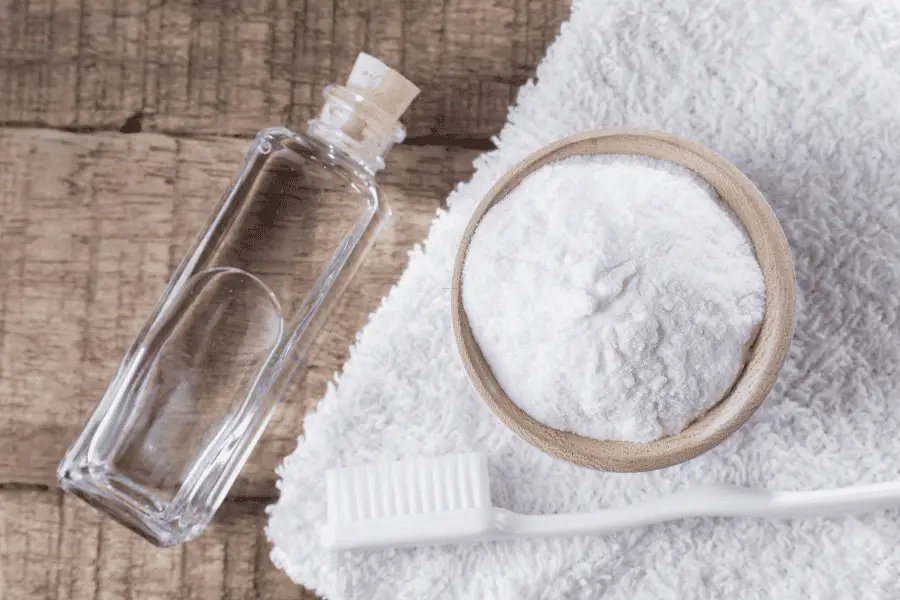
Ingredients to Avoid
This will probably be the longest portion of this post, but I promise it’s worth it! I touched on some of these a little bit in my post about embracing non-toxic living, but we’re going to dive deeper now. By understanding these harmful substances and taking proactive steps to minimize exposure, you can create a safer and healthier environment for yourself and your family. These are the top 10 ingredients we try to avoid as much as we possibly can.
Phthalates
Phthalates are a group of chemicals widely used in the manufacturing of various household products, including plastics, cosmetics, and cleaning agents. These chemicals enhance the flexibility and durability of materials but come with potential health risks. Phthalates are known endocrine disruptors, meaning they interfere with hormone production and function in the body. This interference can lead to developmental and reproductive abnormalities, affecting both humans and wildlife. To prioritize your well-being, it is crucial to identify and avoid products containing phthalates.
Formaldehyde – A Hazardous Substance in Everyday Products
Formaldehyde, a colorless and strong-smelling gas, is commonly found in household products such as cleaning agents, furniture, and carpets. Yep, the embalming agent is found in household products. This chemical is used as a preservative and to inhibit the growth of bacteria and fungi. However, prolonged exposure to formaldehyde can result in various health issues, including respiratory problems, skin irritation, and even an increased risk of cancer.
Sodium Lauryl Sulfate (SLS) and Sodium Laureth Sulfate (SLES) – Harsh Surfactants
Sodium Lauryl Sulfate (SLS) and Sodium Laureth Sulfate (SLES) are commonly used as surfactants in household products such as cleaning agents, shampoos, and soaps. These chemicals create lather and foam, giving the perception of effective cleansing. However, SLS and SLES can strip the skin and hair of their natural oils, leading to dryness, irritation, and potential long-term damage. Additionally, during the manufacturing process, these chemicals can be contaminated with 1,4-dioxane, a known carcinogen. To promote healthier alternatives, opt for sulfate-free products that are gentle on both you and the environment.
Triclosan
Triclosan, an antimicrobial agent, has been widely used in household products such as hand soaps, detergents, and toothpaste. While intending to combat bacteria and maintain cleanliness, triclosan poses potential risks to human health and the environment. Prolonged use of triclosan has been associated with bacterial resistance, rendering antibiotics less effective when needed. Furthermore, triclosan can accumulate in aquatic ecosystems, causing disruption to the delicate balance of aquatic life. Choose triclosan-free alternatives or products with natural antibacterial ingredients to ensure a safer and more sustainable approach to cleanliness.
Ammonia
Ammonia is a powerful cleaning agent commonly found in household products designed to cut through grease and grime. While effective, ammonia should be handled with caution due to its potential health hazards. Inhaling ammonia fumes can irritate the eyes, skin, and respiratory system, especially in individuals with pre-existing respiratory conditions. Additionally, when mixed with bleach, ammonia can produce toxic fumes, posing further risks to your well-being. Prioritize your safety by opting for ammonia-free cleaning options or exploring homemade alternatives using vinegar or baking soda.
Parabens – Hormone Disruptors in Your Everyday Products
Parabens are a group of preservatives commonly found in cosmetics, personal care products, and even some food items. These chemicals are used to prevent the growth of bacteria and fungi. However, parabens can mimic estrogen in the body, potentially disrupting the delicate hormonal balance. Studies have also suggested a possible link between parabens and breast cancer. When shopping for household products, including personal care items, choose paraben-free alternatives or products that utilize natural preservatives such as grapefruit seed extract or vitamin E.
Chlorine
Chlorine is widely used as a disinfectant in household products like bleach, toilet cleaners, and pool chemicals. It is effective in killing germs and bacteria. However, it is crucial to be mindful of the potential risks associated with chlorine use. Prolonged exposure to chlorine fumes can irritate the respiratory system and cause skin and eye irritation. Furthermore, chlorine can react with organic matter to form harmful byproducts known as trihalomethanes (THMs), which are classified as carcinogens. To reduce exposure, consider chlorine-free cleaning agents and explore alternative disinfection methods to maintain a healthier living space.
Ammonium Quaternary Compounds (Quats)
Ammonium quaternary compounds, or quats, are antimicrobial agents commonly found in disinfectant sprays, fabric softeners, and household cleaners. These chemicals are effective in killing bacteria and viruses; however, their widespread and excessive use can contribute to the development of antibiotic-resistant strains of bacteria. Some quats have also been associated with respiratory issues, skin allergies, and aquatic toxicity. Seek out household products that employ alternative disinfecting agents or consider natural cleaning methods such as steam or vinegar solutions.
PFAs
Per- and polyfluoroalkyl substances (PFAs) are a group of human-made chemicals that have gained attention due to their widespread use and potential health risks. These substances are commonly found in household products such as non-stick cookware, water-resistant fabrics, and stain-resistant treatments. PFAs are persistent in the environment and have been linked to a range of adverse health effects. Studies have associated PFAs with increased cholesterol levels, thyroid disease, developmental delays in children, and even certain types of cancer. Given the potential risks, it is essential to minimize exposure to PFAs by choosing PFAs-free alternatives and avoiding products treated with stain or water-resistant coatings containing these harmful substances.
Synthetic Fragrances
Synthetic fragrances are used in various household products, including air fresheners, laundry detergents, and personal care items. These synthetic materials are often a mixture of several chemicals and could contain over 3,000 potential ingredients—with many undisclosed due to trade secret protections. Some synthetic fragrances contain phthalates and other harmful substances that can trigger allergies, respiratory issues, and skin sensitivities. To avoid potential health risks, opt for fragrance-free products or those scented with natural essential oils, ensuring a safer and more pleasant experience.
Volatile Organic Compounds (VOCs)
VOCs are used in paints, refrigerants, pharmaceuticals, and more. Exposure to these harmful substances has been linked to throat irritation, headaches, loss of coordination, and damage to the liver, kidneys, and central nervous system. They are also found in much of the United States’s water supply, making it incredibly important to filter our water through a system that can help reduce the toxins we’re exposed to.
I feel like it’s important to mention a fact I’ve encountered many times in my research. It’s frustrating because, in a country that seems so progressive, the United States falls short in a very important area. In our country, there are currently only 11 ingredients banned in food and personal care products. In Europe, over 1,300 ingredients are currently banned from use. Additionally, when an American product is sold in Europe, it contains a warning label saying the product contains a toxic chemical known to cause health issues, including cancer.
If other countries can find natural ingredients and use fruit juice instead of food dye, why can’t we do it here, too? We deserve better!
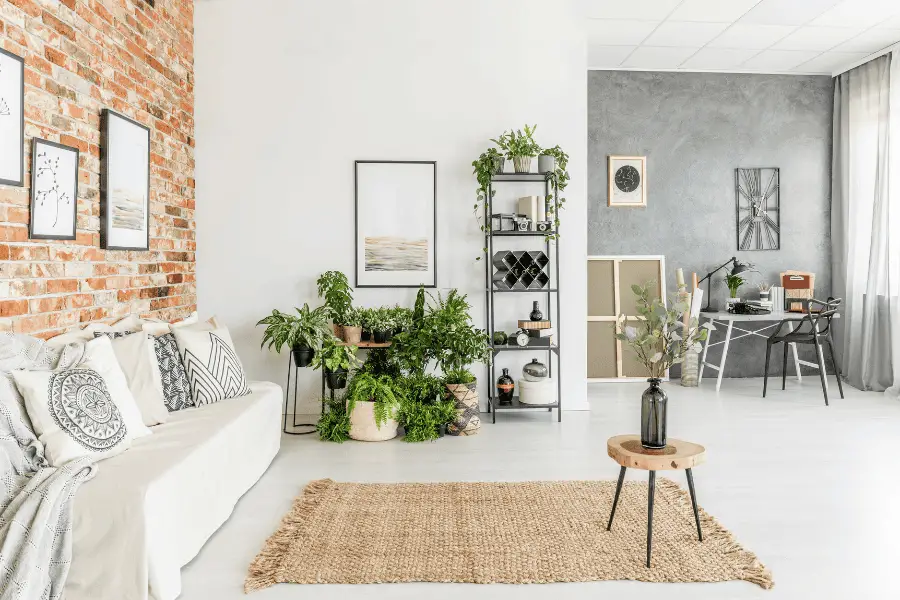
How to start transitioning to a chemical-free home
Now that we’ve covered the benefits of removing chemicals from your home, let’s discuss effective ways to start transitioning to a chemical-free home.
I know it can be overwhelming, so take it one step at a time. Even focusing on one room at a time can help you slowly transition to this lifestyle without feeling too stressed out.
The Kitchen
Unfortunately, our food supply is one of the biggest culprits of added preservatives and chemicals. It’s frustrating to learn just how much junk is in our food.
The easiest way to clean up your food is to eat low-processed, earth-grown foods. Such as fruits and veggies, meat, and organic grains. When you can afford it, organic dairy, meat, grains, and fruits and veggies are best. However, I know firsthand how expensive that is. As a mom of 6, it’s not always possible. We shop the EWG Dirty Dozen and Clean 15 as much as we possibly can. If things are tight that month, we don’t worry about the rest!
Next, we try to use plastic as little as possible. It leaches chemicals into your food and can cause health issues.
Here are my recommendations for swaps to start budgeting for:
- Plastic Tupperware swapped for glass. I love this set. I feel this is a pretty affordable set to choose from when switching from plastic to glass.
- No single-use utensils
- Baking utensils swapped from plastic to wood options.
These are the easiest swaps to make in your kitchen. When you are ready and feel like making more changes, another great idea is to avoid nonstick cookware and bakeware.
Here are my favorites. I’m sharing a cast iron set that’s excellent, but it’s important to mention that we don’t use cast iron. It can leach iron into your food, and while this is okay for some, our son has had a lot of blood transfusions during his cancer treatment and already struggles with iron overload. If this is something you think you might be struggling with, I would not recommend using cast iron. A safer option would be stainless steel or ceramic.
Another area to examine is your water supply. Tap water is likely filled with chemicals, including fluoride.
Aquatru is one of the best clean water filter systems available. I have previously looked into Berkey filters, but they are being sued right now after people have had their water tested and are still finding chemicals in it.
Other items you could look into when you are ready:
- Dish and hand soap
- Dish detergent
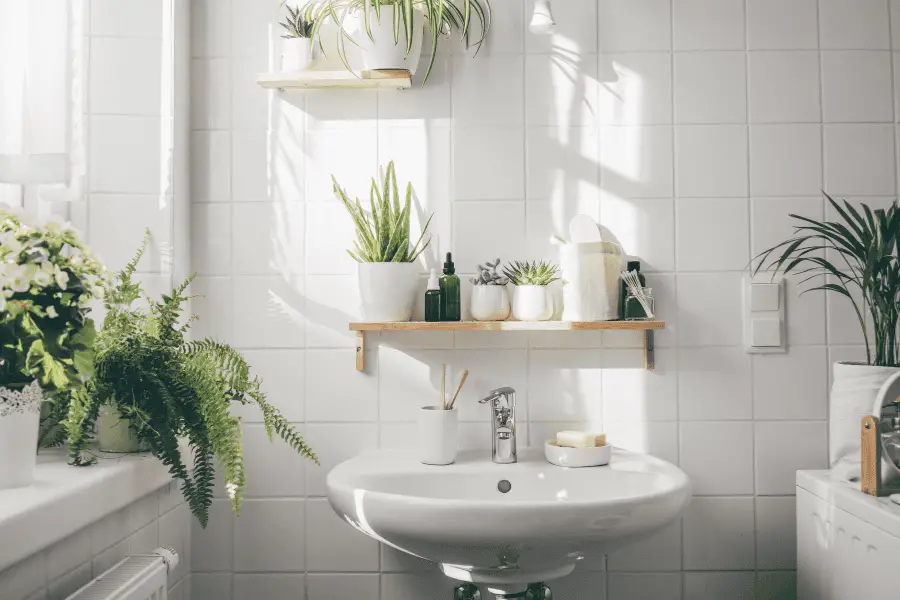
Bathroom
The bathroom has the potential to be filled with harmful chemicals. From hair care to body wash, mouth care, feminine care, beauty products, and lotions. It’s a lot! As I mentioned earlier, start slow!
Do your research, and when you run out of an item, replace it with another.
Here’s a list of areas you could audit:
- Hair care
- Makeup
- Skin Care
- Deodorant
- Mouth care
- Lotions
- Feminine products
- Cleaning products
These are some of my favorite brands that are trustworthy and provide non-toxic products. Remember to do your own research, as I have not tried every product each brand offers:
- Ilia
- Honest Beauty
- Avalon Organics
- Dime
- Nano-hydroxyapatite toothpaste
- Papa Bear Naturals Deodorant
- Tallow Butter
- Branch Basics Cleaning Supplies
Another thing to consider is a water filter for your shower. If you’re filtering water in the kitchen, you might want to think about your bathrooms, too! Aquabliss has incredible reviews, plus it’s super affordable!
Bedroom
It’s not as huge of a list, but there are still a few things to consider.
The mattress is probably your biggest culprit. We aren’t at a point where we can afford to replace our mattress, but it’s on the list. When looking for a mattress, research the ingredients and opt for organic cotton and natural materials. If it’s full of synthetic latex, vinyl, and flame retardants, it’s going to let off toxic gasses for a long time. Try to find clean, organic ingredients as much as you can. Here’s a post on organic mattresses I recently shared!
I know this list is long, but don’t get discouraged. It’s not a race. Take things at your own speed and make changes as you see fit.
Other items to consider in the bedroom:
- Bedding
- Pillows
- Blue light blockers
General household items
Remember when I said I don’t worry much about my young children touching cleaning products? That’s because I really only use two products: vinegar and baking soda. Castile soap is used for floor cleaning and laundry soap, but I make a big batch every eight weeks or so, and that’s it!
When you use natural cleaners, you only need a couple! Dilute as needed, and you’re good to go.
For laundry detergent, I use this recipe and avoid all the harsh chemicals.
We also use wool dryer balls instead of dryer sheets. There is no waste and no strong smell! You can even put a few drops of your favorite essential oil on them and throw them in the dryer with your clothes.
Air fresheners
This is a hard no for us. At this point, the only air fresheners I use are diffused essential oils. I very rarely light a candle, but only when I find an option scented with pure essential oils. I get headaches very easily when I’m around synthetic fragrances, so I just don’t risk it.
Consider these alternatives instead:
- Beeswax candles
- Essential Oil diffuser
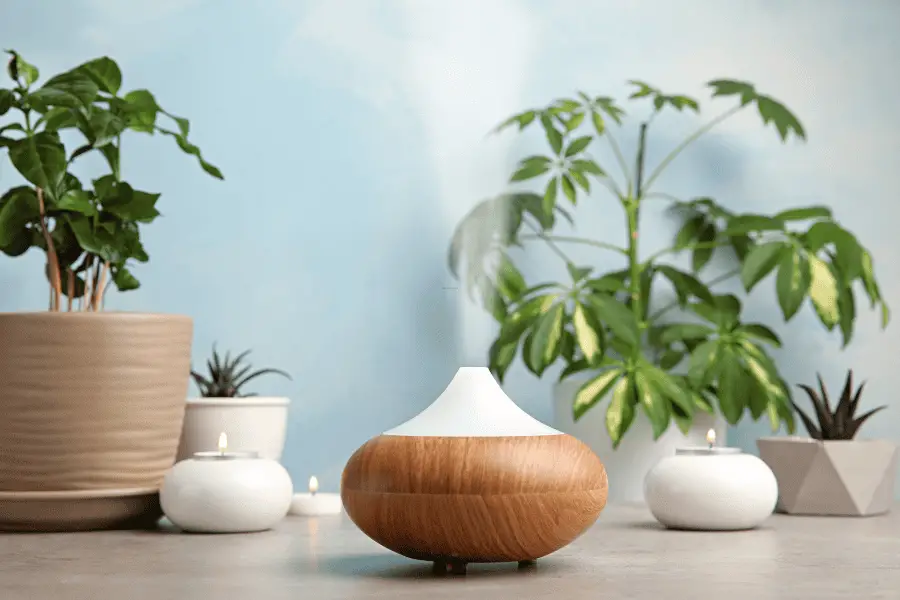
Air purifiers
If you are considering an air purifier, I can’t recommend the AirDoctor enough! We have two and are saving for another. They filter out the air beautifully, plus they have BOGO-free deals throughout the year that make it easy to afford to purchase! It’s worth every penny to use. You should see the filters when we replace them. So gross!
If an air purifier is not within your budget right now, there are other ways to create fresh air in your home! Remember to open the windows often, and maybe adopt a few plants such as snake plants and spider plants. Both are known to help clean indoor air the natural way!
Habits that have helped us maintain a chemical-free home
- Read your labels! Before we make a purchase of an item we haven’t vetted, we look at the label. It helps ensure we are making good decisions.
- No shoes in the house. I know this might seem silly, but all those places your shoes touch touch your floors, too. We avoid this stressor by taking our shoes off at the door.
- Choose organic when you can afford it. I know this world is obnoxiously expensive, so if this isn’t doable for your budget, don’t stress it! When it is, though, focus on the Dirty Dozen and Clean 15 from the Environmental Working Group (EWG).
Resources I’ve found helpful on our journey to creating a chemical-free home
Please remember to do your own research. While these apps have been so helpful, I still do my own research, as no brand is immune to being bought out. I am not being cynical, but we see it all the time. Take a few minutes to investigate when making a decision.
Final thoughts
I know I provided a lot of information today, but I hope you can take what I’ve shared and apply it to the goals you have for a healthier lifestyle.
It doesn’t do anyone any good to beat yourself up over things you didn’t know. Take it in strides, celebrate your accomplishments, and keep going! You’ve got this. If you have any questions, I am happy to help! Let me know if you have any questions below, and good luck on your journey to creating a chemical-free home!
This site may contain links to affiliate websites including Amazon. I may receive an affiliate commission for any purchases made by you through Amazon or other potential affiliates and no additional cost to you. Thank you for your support.

